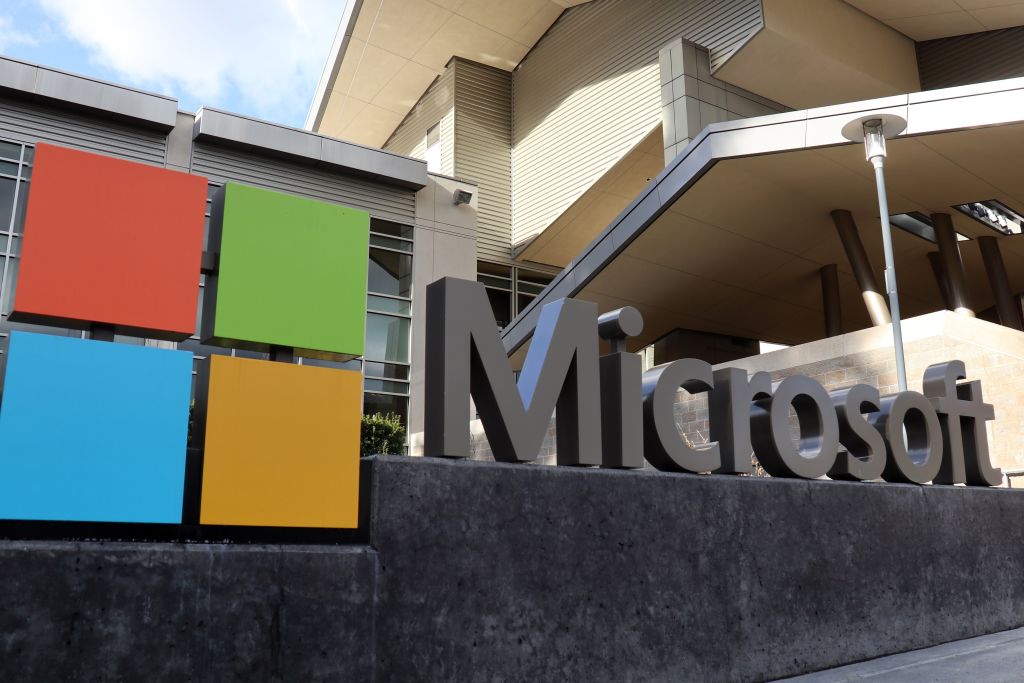ii view: Microsoft hindered by slow roll-out of data centres
Investing heavily in AI-related infrastructure and with a foot in the corporate door via its Windows operating software. We assess prospects.
30th January 2025 16:01
by Keith Bowman from interactive investor

Second-quarter results to 31 December
- Revenue up 12% to $69.9 billion year-over-year
- Net income up 10% to $24.1 billion
- Earnings per share (EPS) up 10% to $3.23
- Returned $9.7 billion to shareholders, up from $9 billion in the prior first quarter
Chief Executive Satya Nadella said: “We are innovating across our tech stack and helping customers unlock the full return on investment of AI to capture the massive opportunity ahead.”
- Invest with ii: US Earnings Season | Buying US Shares in UK ISA | Cashback Offers
ii round-up:
Microsoft Corp (NASDAQ:MSFT) reported second-quarter sales and earnings exceeding Wall Street forecasts but with future sales’ estimates shy of hopes as the tech titan continues to battle industry-capacity constraints.
Sales for the second quarter to late December rose 12% to $69.9 billion (£56 billion), fuelling earnings growth of 10% year over year to $3.23 per share. That beat estimates of $68.8 billion and $3.11 per share respectively.
Current third-quarter sales to 31 March are forecast by Microsoft to come in at up to $68.7 billion. Analysts had forecast $69.8 billion. Sales remain hindered by the slow build of new data centres.
Shares for the Dow Jones and Nasdaq 100 company fell 4% in post-results US trading having come into these latest numbers up 8% over the last year. That’s similar to cybersecurity software provider Palo Alto Networks Inc (NASDAQ:PANW), although behind a 22% gain for the tech-heavy Nasdaq 100 index over that time.
Microsoft’s capital expenditure or investment for the period totalled $22.6 billion as it continued to spend on data centres and expensive NVIDIA Corp (NASDAQ:NVDA)-supplied AI-related computer chips to host AI-related software for customers.
The tech giant operates across the three arenas of intelligent cloud, productivity and business processes, including its Windows and Office software, as well as personal computing, taking in products such as gaming and the Xbox.
Intelligent cloud-related sales during the second quarter rose 19% year-over-year to $25.1 billion. Currency-adjusted Productivity related revenues rose 13% from the second quarter last year to $29.4 billion. Microsoft Windows remains the dominant systems software used by companies globally. Sales for the division’s Linked-In business improved 9%.
Personal Computing sales for the period were unchanged year-over-year at $14.7 billion. A 4% improvement in device revenues and a 20% climb in search and news advertising sales offset a 7% retreat in gaming-related sales.
Broker Morgan Stanley reiterated its “overweight” stance on the shares post the results. Third-quarter results are likely in late April.
ii view:
Started in 1975, Microsoft today employs more than 220,000 people. The maker of Windows software regularly competes with iPhone maker Apple Inc (NASDAQ:AAPL) and computer chip-maker Nvidia as the US’s largest company by stock market value. The US remains its biggest generator of sales at 51%, with the balance of 49% spread globally, including the UK.
For investors, AI-related demand exceeding supplier ability to build data centres is now constraining sales estimates. Competition to host AI software on data-centre servers for corporations is intense, with Google owner Alphabet Inc Class A (NASDAQ:GOOGL), AWS owner Amazon.com Inc (NASDAQ:AMZN), International Business Machines Corp (NYSE:IBM) and Oracle Corp (NYSE:ORCL) all fighting hard. An estimated future price-to-earnings (P/E) ratio above the three- and 10-year averages may suggest the shares are not cheap, while Microsoft’s previously failed venture into mobile phone software has arguably left it void of the most important consumer computing gadget of all, the mobile phone, now dominated by Apple and Alphabet’s Android software.
- Sign up to our free newsletter for investment ideas, latest news and award-winning analysis
- Can tech shares keep rising under Trump?
- Why it’s not over for Nvidia or these mega-cap tech stocks
More favourably, its own investment in AI-related infrastructure continues. Although not wholly owned by Microsoft, it does have a working relationship with AI software provider ChatGPT, along with its own Copilot software offering. Microsoft’s domination of corporate software via Windows and Office gives it an ongoing foot in the door to sell other services such as cloud and security provision, while both product and geographical diversity persist.
In all, and despite ongoing risks, this well-managed tech titan continues to appear worthy of its place in many already diversified investor portfolios.
Positives:
- Windows operating system holds a dominant market position
- Growing cloud business
Negatives:
- Uncertain economic outlook
- Political concern remains regarding the size and power of tech companies
The average rating of stock market analysts:
Buy
These articles are provided for information purposes only. Occasionally, an opinion about whether to buy or sell a specific investment may be provided by third parties. The content is not intended to be a personal recommendation to buy or sell any financial instrument or product, or to adopt any investment strategy as it is not provided based on an assessment of your investing knowledge and experience, your financial situation or your investment objectives. The value of your investments, and the income derived from them, may go down as well as up. You may not get back all the money that you invest. The investments referred to in this article may not be suitable for all investors, and if in doubt, an investor should seek advice from a qualified investment adviser.
Full performance can be found on the company or index summary page on the interactive investor website. Simply click on the company's or index name highlighted in the article.